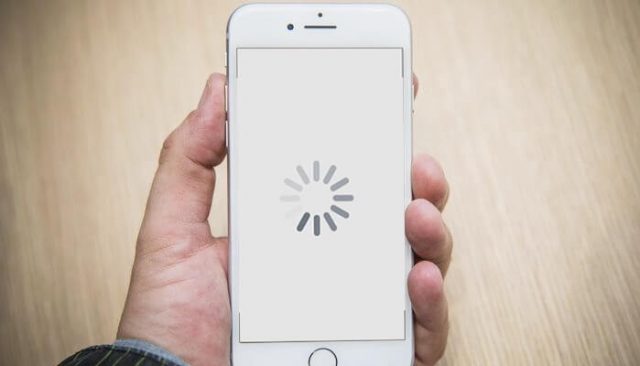Today 74% of the world population uses smartphones and the popularity of mobile applications has a major impact on the lifestyle of the people across the globe. Year after year the expectations of people towards mobile applications are increasing and any minor fault in the app may lead the customer to uninstall the application. As per the statistics 113 thousand apps were released in a month in google play store. So to keep pace with the highly dynamic and competitive mobile app market, the brands across the world are looking for technological solutions for “mobile app testing” which are faster, qualitative, and convenient. But developing effective mobile application testing platforms is not at all a cakewalk. There have been constant technological evolutions to reduce the pitfalls of mobile application testing. So let’s discuss some of the most effective solutions for mobile application testing problems.
Get rid of device fragmentation by parallel testing
Due to the frequently releasing devices and OS by OEMs, developing an app having multi-platform support is a challenge otherwise the issue of device fragmentation may arise. Before developing an application, the factors that need to be considered for getting rid of device fragmentation are a gamut of variations like the device-OS combination, device-browser combination, browser-os combination, screen sizes, form factor, etc. Testing an app until it meets all the combinations for securing compatibility in multiple devices available in the market requires enormous time and effort. Just automation won’t be the solution for cross-platform testing. We need parallel testing solutions that give decent device coverage and a scalable infra for dynamic requirements. Through parallel testing, we can test an application on multiple devices simultaneously. Hence parallel testing is a must for mobile application testing.
Implement a Cloud device lab
We know how complicated it is to construct a physical device lab having multiple mobile devices for parallel testing. The cost and time incurred are roof breaking and on top it is inconvenient for teams geographically separated. A Cloud device lab would be highly recommended for app testing as it has tonnes of benefits over a physical device lab. It removes the cost and time being invested in constructing a physical device lab, it is highly convenient as it enables business continuity in odd times like pandemic, or teams that are geographically separated, extremely beneficial for scalability as adding other device is just a matter of few clicks and you can even scale down as per the project requirements which is again cost-efficient deal. Also, a cloud platform is highly interactive as many testers and developers can simultaneously be in one device lab and can share important reports or video conferences for meetings by integrating collaborative tools like slack, github, jira etc. A Cloud testing platform can be effortlessly integrated into any ci/cd pipeline with the help of some plugins and API’s. These advantages make a cloud testing platform highly conducive for mobile application testing.
Practice continuous testing
In continuous testing, testing takes place in the entire application development lifecycle i.e. from planning, designing to testing, developing, and monitoring. Continuous testing if practiced in high-speed environments like continuous integration then the speed and quality of mobile application development increases by multiple folds. For effective continuous testing we need to integrate high-speed test automation tools like Appium. So continuous testing in a mobile devops environment with robust automation tools like Appium can fetch high performing mobile applications.
Implement CI/CD pipeline
Today mobile devops is a highly practiced methodology for developing high performing mobile applications. The continuous integration increases the speed and efficiency of mobile applications by multiple folds as several commits are made on a single day which provides ready to deploy codes quickly. For efficient results in continuous integration and continuous delivery, a systematic CI/CD pipeline is a must. The CI/CD pipeline should be a combination of right testing, development, building, monitoring, collaborative tools to form a chain that can provide high performing mobile apps.
Practice healthy Collaboration
Today mobile app testing involves multiple teams like testers, developers, and operations teams. Many times operations teams are held responsible for delay in deployment. Miss communication or less communication among teams might cause loopholes in the process of mobile app development lifecycle. Hence communication among teams should be given utmost importance and teams that are geographically separated should make use of tools like Jira, Slack, Microsoft teams etc to conduct video conferences and meetings for sharing reports.
Conclusion
To survive the highly competitive market of mobile applications, organizations need to follow the right set of practices and tools for mobile application testing. pCloudy is a cloud-based continuous testing platform that provides high speed and quality mobile application testing. With more than 5000 device browser combinations it eliminates the device fragmentation issue with the help of cross-platform testing. It supports a number of integrations like Jenkins, Appium, Jira, Github, etc to provide a systematic ci/cd pipeline for developing high performing applications. Being a cloud platform you can use it from anywhere and anytime. Hence pCloudy is the perfect buddy if you want your mobile applications to thrive in the high competition and fulfill the dynamic demands of your users.
You may check my blog for other informative articles as well, TechieMag.net
Table of Contents





![[Jan 2024] EZTV Proxy | Unblock EZTV | EZTV Alternatives eztv](https://www.techiemag.net/wp-content/uploads/2020/05/eztv-300x194.png)


